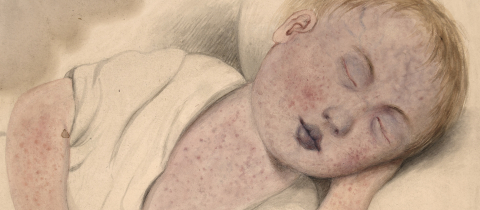The history of science is full of disproved experiments, revised textbooks, and rewritten hypotheses. Even Nobel prize-winning research, which is often viewed as the best work science has to offer, can fall by the wayside. One example is the 1927 Nobel Prize in Medicine awarded to Julius Wagner-Jauregg for treating syphilis by infecting patients with malaria.
Dr. Jauregg, an Austrian psychiatrist, once saw a patient return to sanity after a high fever caused by a bacterial infection. This experience sparked an interest in using fever as a treatment for psychosis, specifically psychosis caused by advanced syphilis. Dr. Jauregg hypothesized that inducing fevers in patients by giving them malaria would treat their syphilis.Then he could cure their malaria with quinine. He was right – at least in about a quarter of cases. A 25% full remission rate is much better than a near 0% remission rate, and Dr. Jauregg was hailed a medical hero and awarded the Nobel Prize.
About a year later, Sir Arthur Fleming stumbled across a peculiar bacteria-killing mold called Penicillium notatum, and by the mid 20th century, antibiotics were widely available. This discovery led to malariotherapy being discontinued as physicians (and patients!) prefer antibiotics over scorching fevers to treat syphilis. But why did this bizarre and extreme treatment actually work in a quarter of patients?
The biology behind the bugs
When most people hear about syphilis, they think of the sexually transmitted infection that can cause psychosis if untreated – which is correct! However, the true culprit behind this STI is a spiral shaped bacterium called Treponema pallidum. This bacterium moves from host to host by direct contact with syphilis induced sores called chancres. Chancres are normally located around the genitals, oral or anal cavities and are painless. Because they are hard to spot and don’t cause discomfort, people often don’t notice the chancres and that leads to transmission to their sexual partner. While the invention of antibiotics has steered syphilis from a fear-inducing pandemic to an endemic, syphilis has not been completely eradicated. There were over 175,000 new cases of syphilis in 2021, and the disease disproportionately impacts men who have sex with men.
In most people with syphilis, T. pallidum will travel to the cerebral spinal fluid surrounding the brain and spinal cord. Thankfully, most people’s immune systems can fight off the bacterium without showing symptoms. The small portion of people who can’t get rid of T. pallidum in their central nervous system develop neurosyphilis. Syphilis and neurosyphilis were nicknamed ‘the great imitator’ because of the wide variety of symptoms people can exhibit. Symptoms of neurosyphilis range from headaches, vomiting, and sensory loss in early stages to memory loss, seizures, and vision changes in later stages. Even more frightening is that people can be asymptomatic during early stages of neurosyphilis, making it harder to arrive at a diagnosis until it is too late.
While syphilis is caused by a stealthy, immune system evading bacterium, malaria is caused by a protozoon species called Plasmodium. Protozoa are similar to bacteria in that they cause infections and disease, but at the microscopic level they couldn’t be more different. Protozoa are much larger than bacteria, and have specialized membrane bound organelles like a nucleus, endoplasmic reticulum, and Golgi apparatus. When a female mosquito drinks the blood of someone infected with malaria, the mosquito also becomes infected with malaria. The next time the mosquito gets hungry and settles in for a snack, it transfers the Plasmodium protozoa to the person’s blood.
Once inside a human, the Plasmodium protozoa attack the liver and red blood cells. When the red blood cells become too full of the protozoa, they explode and spread the infecting organisms to neighbouring red blood cells. The result of all these exploding red blood cells? Our immune system freaks out and causes high fever, chills, body aches etc. in an attempt to get rid of the protozoa. Sadly, our immune system alone usually isn’t strong enough to fight off this bug, and untreated malaria can lead to confusion, coma, and eventual death. Thankfully in the 1920s, quinine was an accessible and often successful treatment for malaria (and a yummy addition to the gin and tonic cocktail).
Too Hot to Handle
Malaria induced fevers can reach temperatures of up to 41 degrees Celsius; for reference the highest safe hot tub temperature is 40 degrees. While these fevers are still not hot enough to kill the Plasmodium protozoa, they are warm enough to make the syphilis-causing bacteria very uncomfortable. The amount of surviving T. pallidum at temperatures greater than 37 degrees greatly decreases. In summary, by using malaria to cause fevers, physicians can make a patient too hot for T. pallidum to handle, therefore curing syphilis – as long as the patient can tolerate the high fever.
While Dr. Jauregg did not know as much about the microbiology behind syphilis and malaria, his hypothesis about why malaria works as a treatment for syphilis was essentially correct. And although his research didn’t hold up to the test of time, it reminds us science enthusiasts to always approach new research with a healthy pinch of skepticism.
(Thank you, Andy, one of my peers at medical school, for bringing up this story during class and inspiring a new article!)







